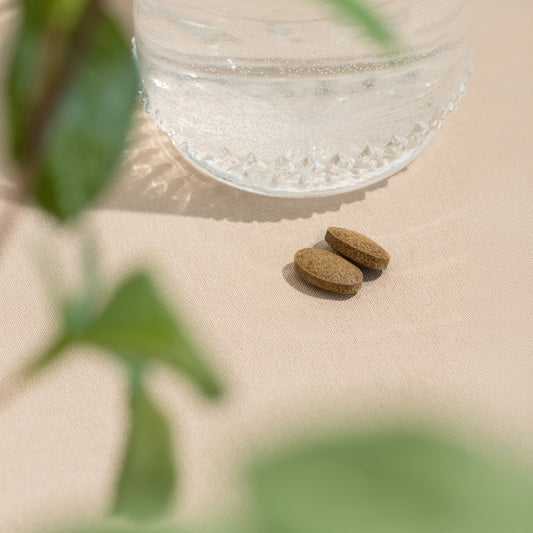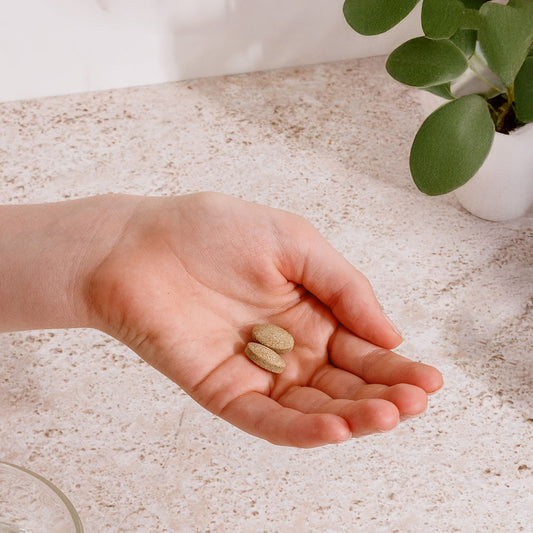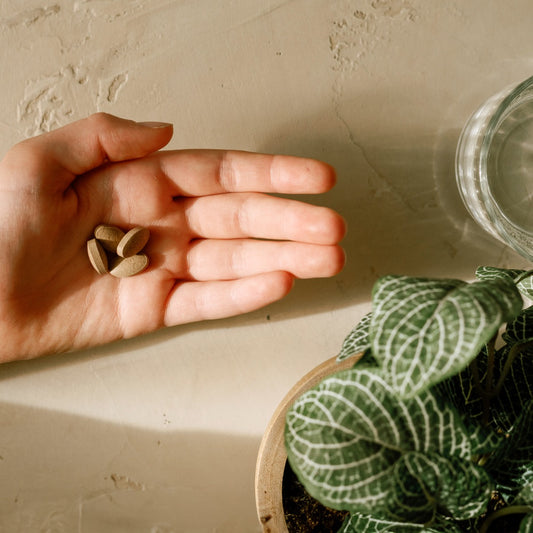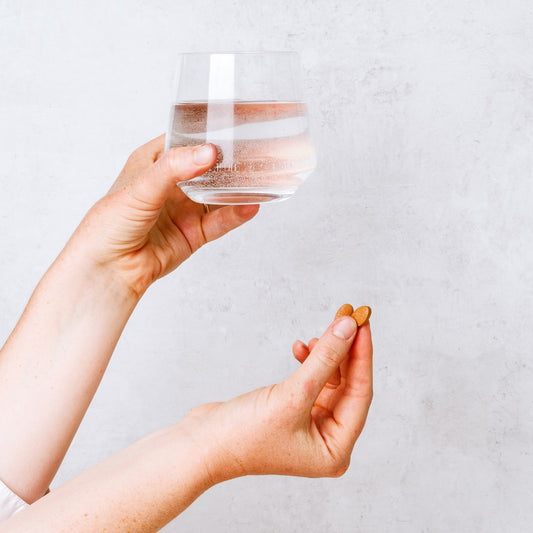This year, perhaps more than ever, you may be looking forward to the long days and sweet delights of summertime. Whether you thrive in the heat and live for summer activities like swimming, gardening, and barbecues—or you dread the heat and sunburns that summer brings—
Grishma, or summertime, is the season of
Those with a pitta-predominant constitutionare most likely to experience heat imbalance this time of year, but
With so much outward, expansive energy during the summer, you may find yourself overly busy with activity and running on empty.
5 Ayurvedic Tips for Summertime Calm
Embracing this season with simple shifts to your diet and lifestyle, a few key self-care practices, and supportive Ayurvedic herbs will help keep your pitta cool and serene this summer. Read on for five simple summertime tips!
1. Beat the Heat
It's no coincidence that the pitta time of day from 10 a.m. to 2 p.m. is also the hottest and most intense. Keep your cool and avoid spending time outdoors during these hours. If you must be outside, stay in the shade, wear light-colored clothing, drink extra water, and wrap a cool towel around your neck.
If you typically workout at mid-day, consider moving your exercise routineto the morning or evening when it's cooler, as kapha
2. Stay Sweet
The sweet taste is Nature's medicine for summer. Juicy and sweet, seasonal fruits are cooling, hydrating, and balancing for pitta dosha.
Summer Fruits
- Enjoy seasonal fruits such as avocado, coconut, sweet berries, cherries, grapes, melon, and plums.
- Swap out your lemons for limes and limit tart and sour fruits like citrus, pineapple, and bananas.
- Allow your fruit to ripen fully for maximum sweetness.
If there is ever a time to enjoy a little ice cream, it's summer! Ayurveda typically favors cooked foods and healthy sweets over processed sugars. But if your
Milk or coconut-based treats are sweet and cooling, while fruit sorbets offer a lighter option and are best for kapha.
3. Be Cool
During the hot summer months, most people will benefit from adding cooling, pitta-balancing foods and herbs to their diet, no matter what their primary dosha. The cooling tastes are sweet, bitter, and astringent, and you'll find an abundance of these in your local, seasonal produce—head to your farmers market for inspiration!
Summer Veggies
-
Most vegetables are good for pitta, so load up on asparagus, broccoli, cauliflower, celery, cucumber, zucchini, summer squash, sweet corn, leafy greens, cooked beets, parsnips, sprouts, sweet peas, and sweet potatoes.
-
Limit heating vegetables like eggplant, tomatoes, peppers, and radish.
Summer Grains and Beans
-
Favor naturally sweet grains like rice, barley, oats, and quinoa.
-
Most beans and lentils are recommended for pitta and are a great alternative to more heating animal proteins.
Summer Herbs and Spices
-
Swap out your pungent or heating spices like garlic and ginger for cardamom, coriander, and fennel. Enjoy cooling herbs like cilantro, mint, hibiscus, and rose.
-
Banyan's Joyful Heart Tea is a wonderful way to boost digestion and balance pitta in summer—drink it hot or as a sun tea, any time of day.
Things to Watch Out For
-
Be mindful of fermented and heating foods such as alcohol, chocolate, coffee, cheeses, yogurt, kimchi, and sauerkraut. A little goes a long way here!
4. Make a Splash
Revive your pitta with a swim in a pool, creek, or lake, as water is incredibly soothing and balancing for pitta. Running water and waterfalls are a wonderful source of
If you don't have a watering hole nearby, you can spritz rose water on your face, eyes, and entire body.
Additionally, you can listen to rain sounds, enjoy a cooling soak in a bathtub, or even just soak your feet in a foot bath.
Make sure to receive water's medicine on the inside as well by staying hydrated throughout the day with plenty of clear fluids. My favorite summertime drink is water with a squeeze of lime and a spring of fresh mint.
5. Take Time to Chill
The long days of summer paired with an abundance of activities and things to do can wreak havoc on your mind and body. Pitta's intense nature enjoys a full schedule, and you may find yourself saying yes to everything.
If you find yourself doing more and sleeping less, it's important to make time to slow down and relax.
You can sprinkle five-minute breaks throughout your day or dedicate time each week for some extra self-care in the form of breathwork or cooling and grounding yoga poses.
Try Sheetali Pranayama (Cooling Breath) or Nadi Shodhana (Alternate Nostril Breathing), Savasana (Corpse Pose), Seated Forward Bend (Paschimottanasana), or Legs Up the Wall (Viparita Karani).
Treat yourself to some










